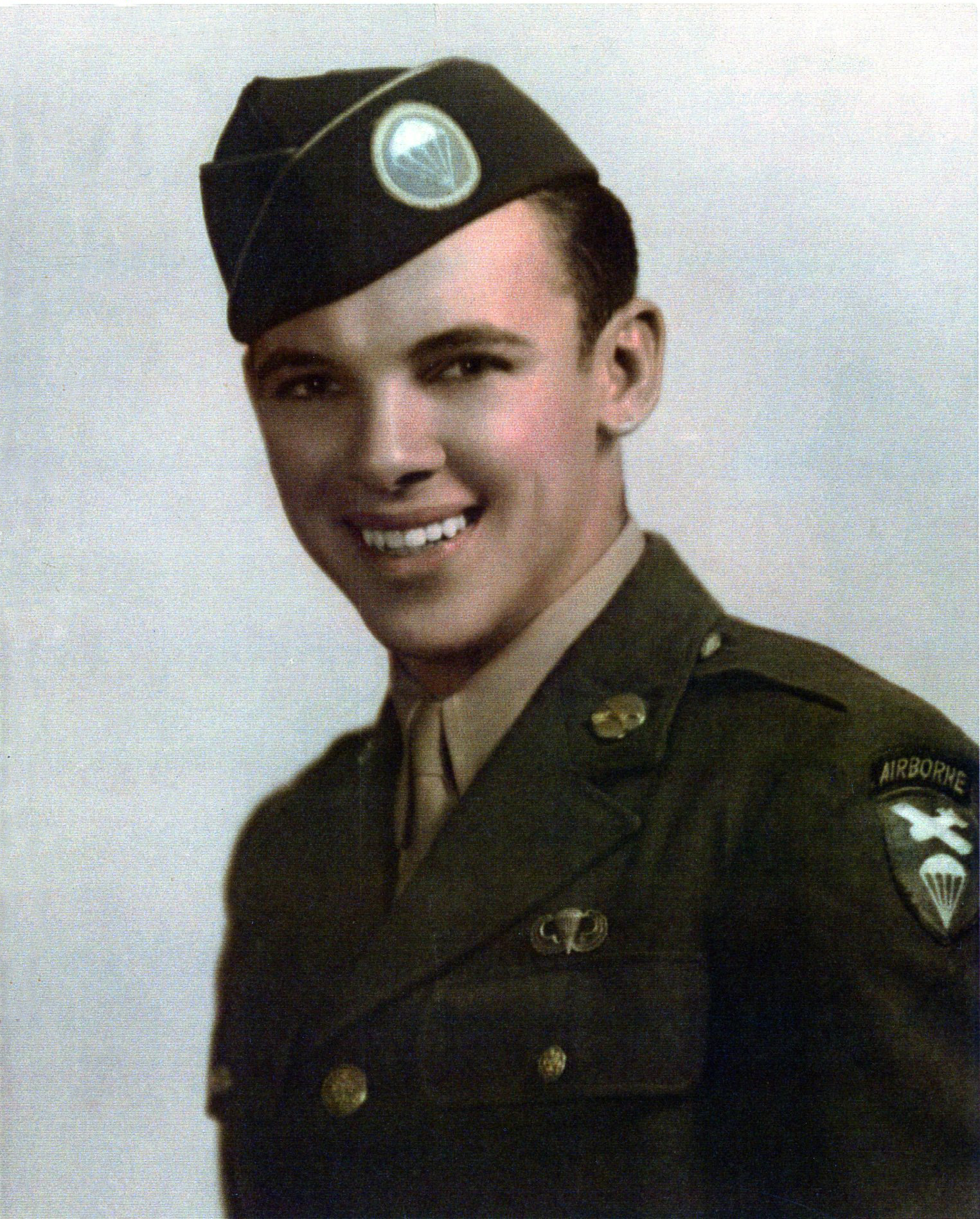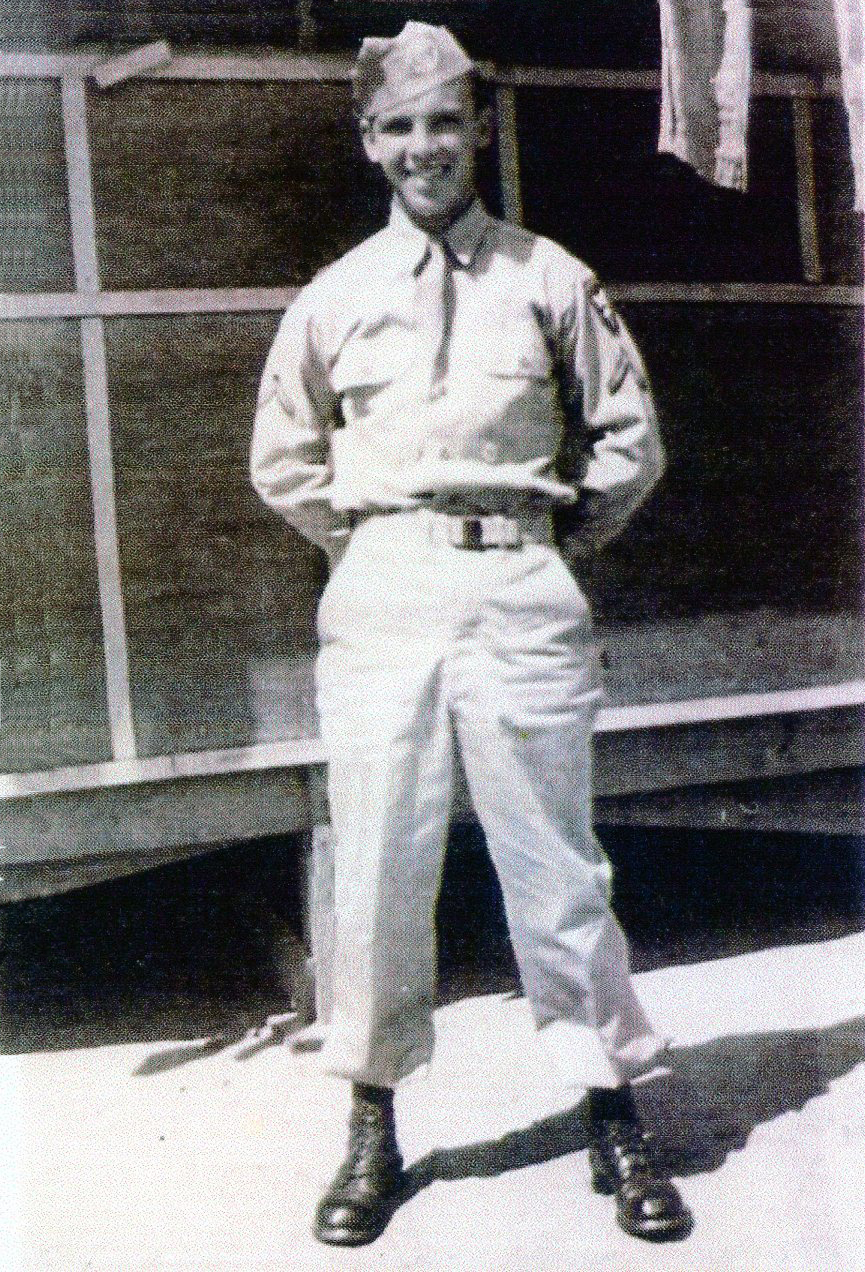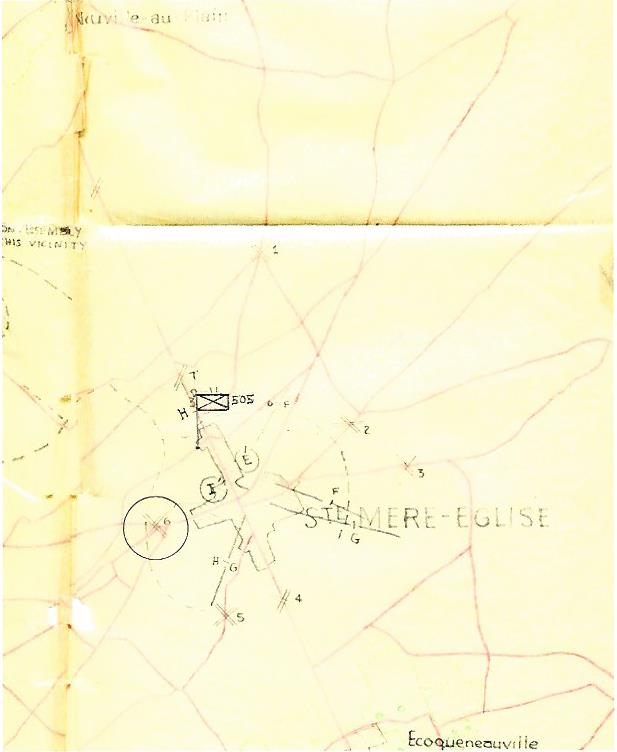
|
|
|
|
|
|
CONTACT US |
|

 |
|
||||||||||||
 |
|||||||||||||
|
|
As a teenager in 1942, I was eager to enter the armed forces and participate in the war being waged in Europe and the Far East. I had been educated regarding the Japanese rape of Manchuria and China; Mussolini's devastation in Ethiopia; and the Spanish Civil War. I knew of Germany's aggression in the Rhineland, Sudetenland, Austria, and finally the invasion of Poland that brought France and England into World War II.
I was also interested in leaving behind the orphans home atmosphere, where I had spent the past nine years. I was sent to a trade school in Lancaster, Pennsylvania due to my laxness in high school and poor grades, and it was from there in the summer of 1942 that I made my move to change things.
I wanted to fly, and in the summer of 1942 at the age of 18, I went to the Army Air Corps recruiting office in the custom house in Philadelphia to enlist. No dice, was their answer, you are color blind, U.S. Navy, same thing on the same day. U.S. Marines, same thing on the same day. Dejected I returned to school in Lancaster in September of 1942, after a summer of work at Bayuk Cigar Company of Philadelphia, and waited for my call by the draft board. No call came from my draft board, so when I came back to Philadelphia for the Christmas New Year break, I visited the local draft board and requested service duty. Report on January 18, 1943 was their reply, and I went home happy to have a time set for my future service. My reporting on the 18th was composed of testing physically and mentally. Report back on the 25th was the end result. I was then sworn into the Army of the United States at the Armory on 32nd and Lancaster avenues in Philadelphia along with several hundred others. We were all sent to New Cumberland across the Susquehanna River from Harrisburg on the Pennsylvania Railroad.
On January 25, 1943 I was interviewed at camp in New Cumberland, Pennsylvania several days after I arrived there from Philadelphia. The non-com doing the questioning, had reviewed my testing data and was using that information to query me further regarding my qualifications in order to select a branch of Army service for me. I immediately informed him that I wanted to be sent to Fort Benning, Georgia for paratrooper training. The questioner stated that I was too young and my mother would have to sign for me to be accepted into that unit, and besides that, he noted that I scored too high for that type of service. He apparently had low esteem for the airborne units. I was too green to protest further, so after a few days on KP I was sent to Camp Tyson in Paris, Tennessee where I received basic training with the Coast Artillery Corps. Basic was followed by a six week course in Army telephone procedures such as setting up switchboards, climbing poles to string wires to sources needed and then operate them using Morse code and other techniques. It was ironic that after basic training in communication school, and the furlough to Texas to visit my father for the first time in 12 years, I was able to volunteer to become a paratrooper in July 1943 when a notice appeared on the Battery bulletin board. I had turned 19 at the end of May 1943. I guess my intelligence quotient must have fallen.
I headed for Fort Benning, Georgia in July of 1943 along with Walter Sral, and a full-blooded Indian named "Chief" Underbaggage from the Midwest and several other volunteers. I was required to redo basic training because what I had received in the Coast Artillery Corps was not accepted as sufficient. Alabama area here I come. Finally in late September I joined the 541st Parachute Infantry Regiment for jump school. I qualified the second week of October after completing A, B and C stages of jump school training. Since I had gone through one communication school why not another to add to my background. Radio communication school for six weeks was my assignment. Twelve weeks of communication schools altogether. I returned to F company under Capt. Krebs and some of my buddies such as Jim Kurz, Wilbur Hein, Chris Courneotes and Walter Sral. In early November the 541st Parachute Infantry Regiment was sent to Camp MacCall, North Carolina for further training and maneuvers in January '44. I managed a furlough at Thanksgiving time '43 for my last time in Philly at home. In January '44 I was shipped off along with a large group of other paratroopers to Fort Meade Maryland, then Camp Shanks, New York for final shots etc. February 11th on board transport in New York Harbor off to Northern Ireland arriving on George Washington's birthday, and training continued. March 16th I was sent as a replacement to the 505 PIR at Quorn, England. I was temporarily housed with Billy Hall's squad in B company of the First Battalion, and several days later I was sent to H company Third Battalion, Captain Walter DeLong commanding. First Sergeant Floyd Taylor assigned me to the first platoon where I met my platoon Sgt. Elmer Blubaugh and squad Sgt. Buck Knauff. Tent number 11 was to be my new home where I met Vance, Vargas and Kilroy.
I was glad to settle down at last and more than happy to be among the veterans of the Sicilian and Italian campaigns. Even though they often razzed me as a new man and told me I probably would not make it through my first combat mission. I had respect for their past performance and felt that they would really help me if I needed aid when it counted. The jump school masters had also made similar statements of possible doom, so what! We embarked on many dry runs to the airdrome, and jumps for training along with several field maneuvers in the English countryside in preparation for the invasion we believed was coming and I became part of the company personnel. Sleeping in the pyramidal tents on cots was a new experience with the sometimes hot coke burning stove in the center of the tent, always that particular odor permeating the area and the street end toilets with running water. That was a revelation to behold. Payday crap games were continuous until all had lost their dough, except for one. Rations arriving in a duffel bag with lock in place. The blessed mail call I helped with, which aided my name recalls of other paratroopers in the company. The training maneuvers all around the Mid-lands of England. The many evenings and weekends in towns like Loughborough and Leicester. Standing retreat in formation on the company street among all these veterans of Sicily and Italy, they were one tough bunch!
I participated in three tough campaigns with H company 505 PIR, the long-awaited invasion of Europe and Normandy for 35 days as we advance westerly to isolate the Port of Cherbourg. Many foxholes dug along the route and patrols to participate in as we battled away through Pont L'Abbe, St. Sauveur le Vicomte, Hill 131, Hill 95 and La Haye du Puits. We enjoyed a brief respite in England until September 1944. On September 17th we invaded Holland, in the "Market Garden" campaign. For 59 days we held the high ground at Groesbeek and took the bridges at Nijmegen, Grave and lesser ones along the path of "Hells Highway". Miserable cold rainy weather endured in late October and early November until we were relieved by the Canadian Army near the brick kilns along the Waal River. After a brief period of rest at Camp Suippes, France and a pass to Paris, we were called up to the front on December 17, 1944 to help stall the German advance during the Battle of the Bulge in Belgium. From our positions along the Salm River near Grand Halleux we were ordered to withdraw on Christmas Eve at midnight by Field Marshall Montgomery due to our extended lines. We did not agree with his assessment, but the Regiment moved back at midnight. Four hours later we of the rear guard who covered our company's withdrawal, moved back to the new positions at Basse Bodeux as well. I experienced one of the coldest winters felt by Belgians in many a year. I was 16 days on the line, until wounded on January 3, 1945 during our attack on the German positions through the heavy snow near Fosse, Belgium. This day was one of the worst of times for H company 505 PIR. We lost quite a number of men that day, in fact, the trooper who bandaged my wound, private John Atchley (DSC-Normandy) my buddy, was killed in action later that day. Several of my other tent buddies such as Roy Bond, were also lost to us, and some of the new men, only a few weeks in the company. We hardly got to know who they were. The other very difficult time was June 7, 1944, when my tent buddy, Richard A.Vargas was killed right beside me while we were moving to a new position from our roadblock on the Chef du Pont road in St. Mere Eglise as ordered. I was not able to save him, even though I tried while Kilroy went for a medic. Many others in the Regiment did not return from Normandy.
My wounds kept me in hospitals in Le Mans, France then Axminister, England, and at last, I was halfway across the Atlantic when the war in Europe ended. Back in the USA at Camp Shanks, I was sent to Newton D. Baker General Hospital in Martinsburg, West Virginia. After 30 days leave at home in Philadelphia, and several hand operations later, I received my official discharge from the U.S. Army on September 27, 1945 at Newton D. Baker General Hospital, Martinsburg, West Virginia.
I believe that the best time for me was after the war when my Division was selected to represent the armed forces of World War II in the Victory Parade. My Regiment paraded up Fifth Avenue, New York City on January 12th, 1946 a cold chilly day, but I was warm with pride as I watched them swing up Fifth Avenue in cadence with my Commander, General James M. Gavin, leading them, and Colonel Ekman leading my Regiment the 505 Parachute Infantry Regiment. How I would have loved to have been in that line of march on that day! They were speaking for all of us who had been part of that division and all who served in the Armed Forces of the USA of World War II.
Les Cruise shortly after he received his wings.

Les in the "Frying Pan Area"
Fort Benning, Georgia, September 1943.

The air force crew christened their C-47 #43-30652 "Whiskey 7". Below is the D-Day personnel roster for their D-Day combat jump on June 6, 1944.The aircraft has been restored by the National Warplane Museum and still is flying out of the Geneseo airport in upstate New York. The plane was shipped across the Atlantic and flown in Europe for the 70th anniversary of D-Day.
Les has flown in the "Whiskey 7" twice in honor of the paratroopers he went into battle with on June 6th 1944 in Normandy, France.

Location of H company on D-Day June 6,1944.


|
|